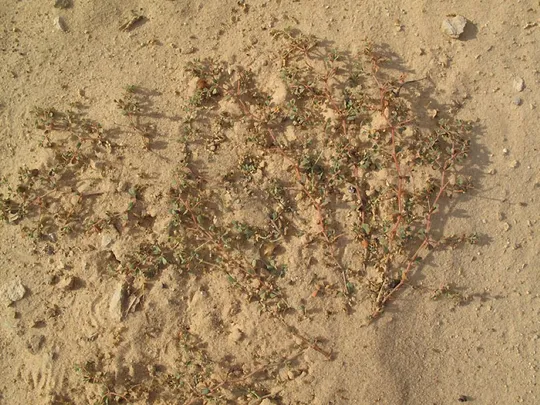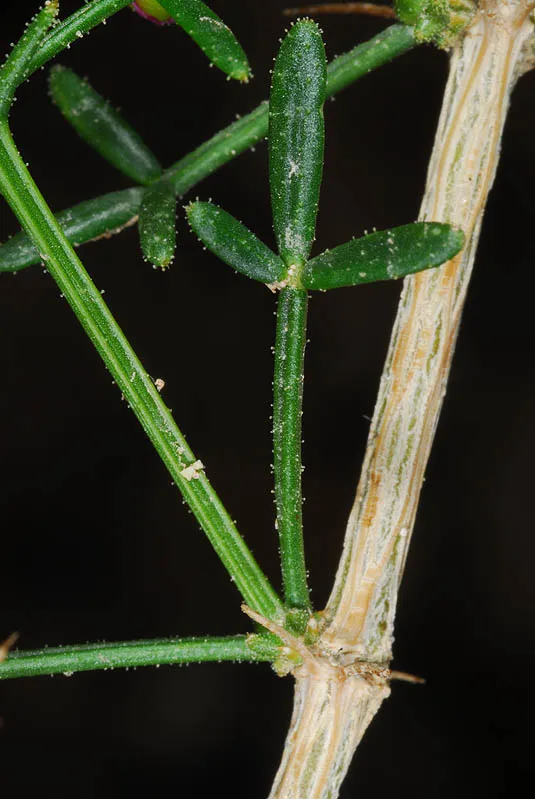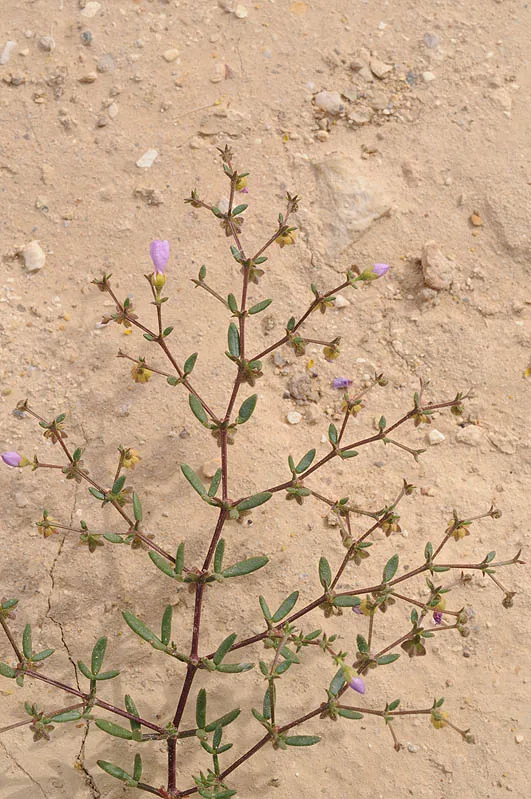White Bean Caper
Zygophyllum album
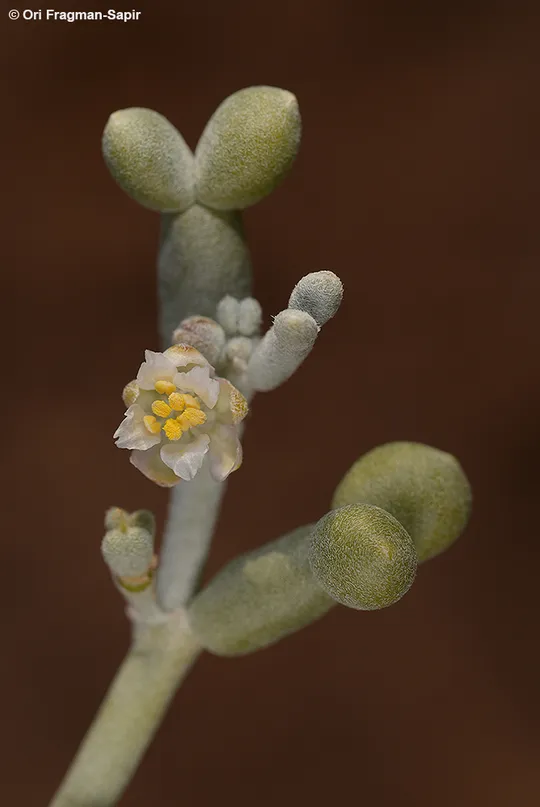
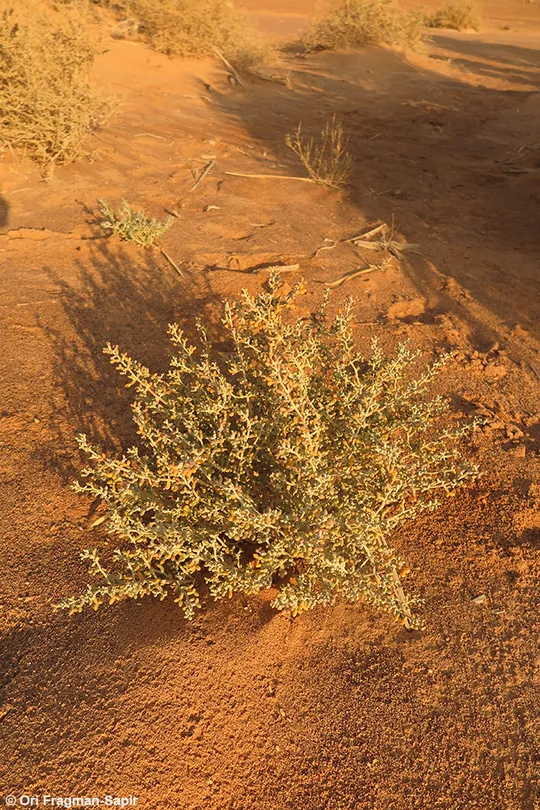
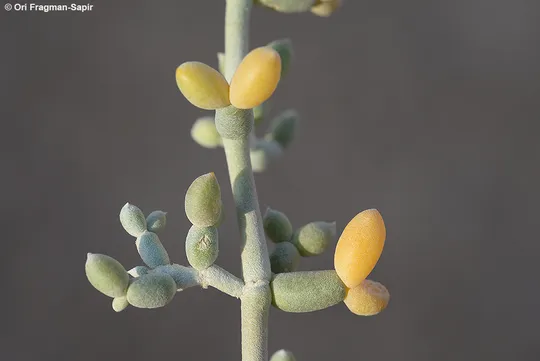
Zygophyllum album grows mainly in
three regions – on the Sharon coast, the Philistian Plain coast
and in the Arava. It was also found on the sandy beaches of
the Gaza Strip. In the Arava the largest population was found in the Evrona
Salt Marsh. In the Yotvata and Sapir salt marshes, small populations grow.
A few individuals were found in the Philistian Plain (the Erez, Zikim, Nitsanim
and Palmahim beaches) and on the Sharon coast (Tel Barukh, Herzliya and Caesarea). The
population that grew in the Yarkon estuary is extinct. The penetration
of Z.
album to
northern coastal sites in the Sharon is a relatively new. It is doubtful
whether the populations from Tel Aviv northwards still
survive. It is found from Ashdod to the Gaza Strip border, and
is common on the Gaza shores, dominating the beach strip nearest to the water
line. It is very common in salt marshes and sandy areas in Sinai, where it
appears in huge populations. Z. album was collected once for the Herbarium in
1935 (by G. Moshayov) in the Dead Sea area, twice in the
Elat Mountains and a single time in the northeastern Negev at En Tsafia in
1966. These findings may be considered episodic.
Sandy areas on saline foundations in coastal and desert salt
marshes. In the coastal region, it grows on sandy strips closest to the water
line.
The genus Zygophyllum includes 80 species growing in desert areas in the
Mediterranean Basin, in Central Asia, in South Africa and in
Australia. Most of the species have characteristic leaves composed of a succulent petiole with a
pair of succulent leaflets (hence the genus name in Hebrew). Five species grow in Israel. The most
common species is Z. dumosum that dominates large areas of the
Negev and Sinai deserts. Its fruit is a schizocarp composed of 5 winged
mericarps, unlike the fruit of Z. album that has a fleshy capsule similar to that of Z.
coccineum that grows in the southern Negev wadis. Another species
growing in the Dead Sea Valley and in the Arava is Z. simplex. This is a spreading annual
grass, which has simple leaves. Z. album is
unique among the other Zygophyllum species in Israel, in the grey hue of its
leaves and its close association with habitats of moist soil layers and sand-covered
salt marshes.
·
At most of the sites in Israel there
are only a few Zygophyllum
album specimens. The largest
population is found in the Evrona salt marsh and numbers about 200 plants in an
area of 0.2 ha. The degree of fragmentation between sites is very large, and they are a few to
tens of kilometers apart. Saline sandy habitats are not common in Israel, which
is why the species is so rare.
In the Arava, the Evrona
Nature Reserve faces a real threat of destruction should an airport be built there as planned.
·
On the Coastal Plain, only seven
sites have survived. Z. album populations decrease as one moves north along
the coast from the Sinai coast.
·
The development of bathing
and recreational beaches on the
sandy strip on the water line of the coastal region endangers the Z. album plants growing
there.
·
Z. album
is not globally threatened, since it is very common in Sinai and Egypt.
·
At present, there are no coastal nature reserves in
Israel that include Z.
album. In the desert, it is protected in the Dom Palm Nature
Reserve in Evrona.
The Zygophyllum album
population at En Evrona should be monitored and preserved.
Zygophyllum album
is found on the southern Mediterranean coastline and in deserts and coastal areas in the Saharo-Arabian region: the Moroccan coast,
Canary Islands, Cape
Verde, the
coasts of
Algeria, Tunisia,
Libya, Egypt, Cyprus and southern Turkey. It is absent from Syria and Lebanon. It also grows
in the Saharan and
Sudanian region in Ethiopia, Chad, and Socotra and in part of the Arabian Peninsula.
Zygophyllum album is a rare
succulent that grows in a
relatively rare and unique saline sandy habitat of the Arava Valley and on
sandy seashores. It is classified as a red species due to the
small number of sites on which it grows, most of which are sensitive to development. The plants growing on the Mediterranean coast in
Israel are particularly threatened as their habitat is in constant danger of
development.
ויזל, י.,ליטב, מ. ואגמי, מ. 1975. צמחי חוף הים בישראל. הוצאת המדור לאקולוגיה, המחלקה לבוטניקה, אוניברסיטת תל אביב.
ויזל, י. ואגמי, מ. 1979. צמחי מלֵחה בישראל. הוצאת המדור לאקולוגיה.
Current Occupancy Map
| 1000 squre meter pixel | 5000 squre meter pixel | 10000 squre meter pixel | |
|---|---|---|---|
| number of observations | 0 | 0 | 0 |
| in total pixels | 0 | 0 | 0 |
| Family | Zygophyllaceae |
| Classification | On the endangered species list |
| Ecosystem | Desert |
| Chorotype | Saharo – Arabian (Mediterranean) |
| Conservation Site | Palmahim Beach. Evrona Salt Marsh |
| Rarity |
1
3
6
|
|---|---|
| Vulnerability |
0
4
4
|
| Attractiveness |
0
0
4
|
| Endemism |
0
0
4
|
| Red number |
1
3.7
10
|
| Peripherality | 0 |
| IUCN category | DD EW EX LC CR EN VU NT |
| Threat Definition according to the red book | Vulnerable |
 Based on:
Based on:
